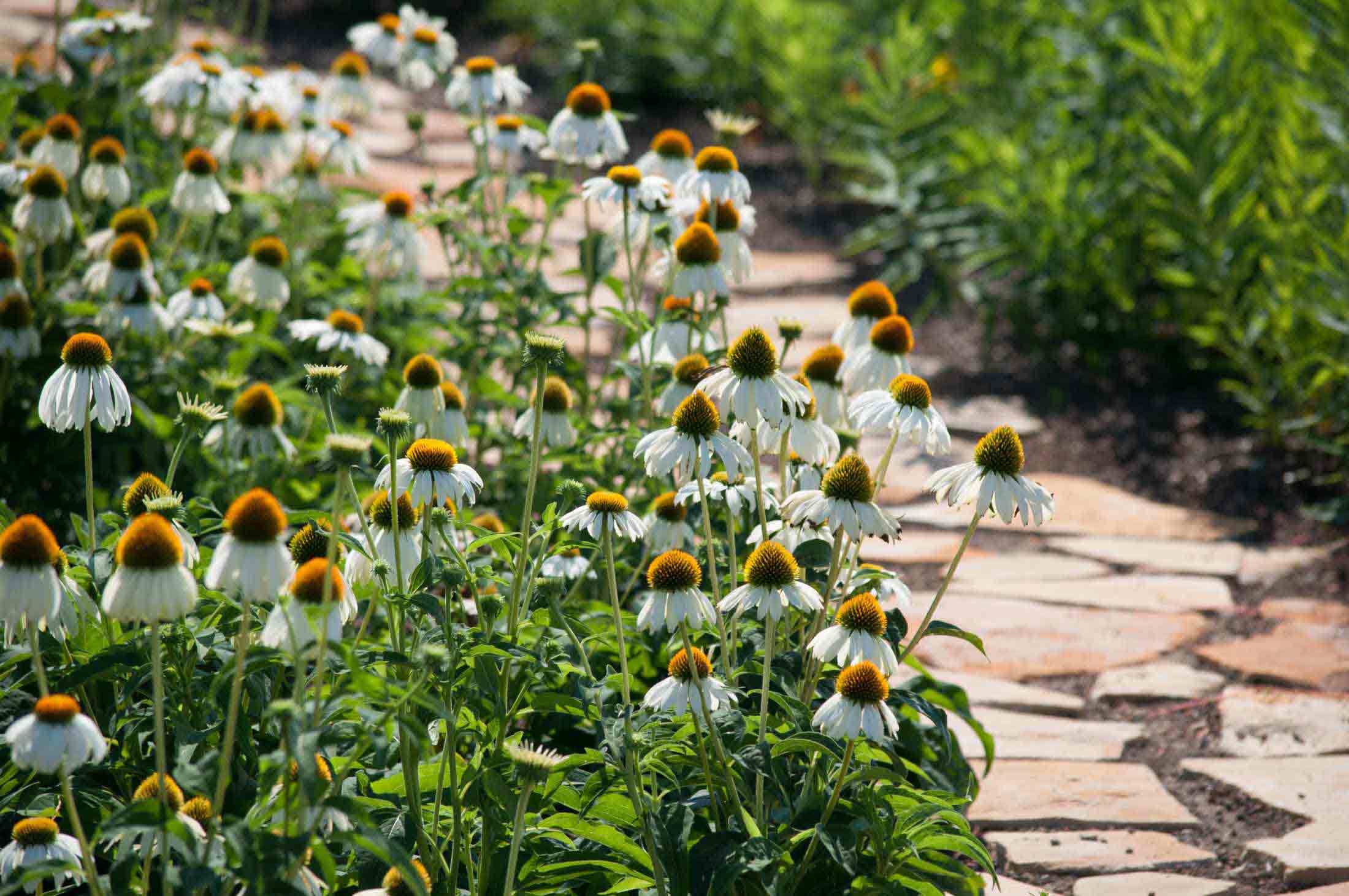Green Innovation
Is the greenest building in the world...in Pittsburgh?
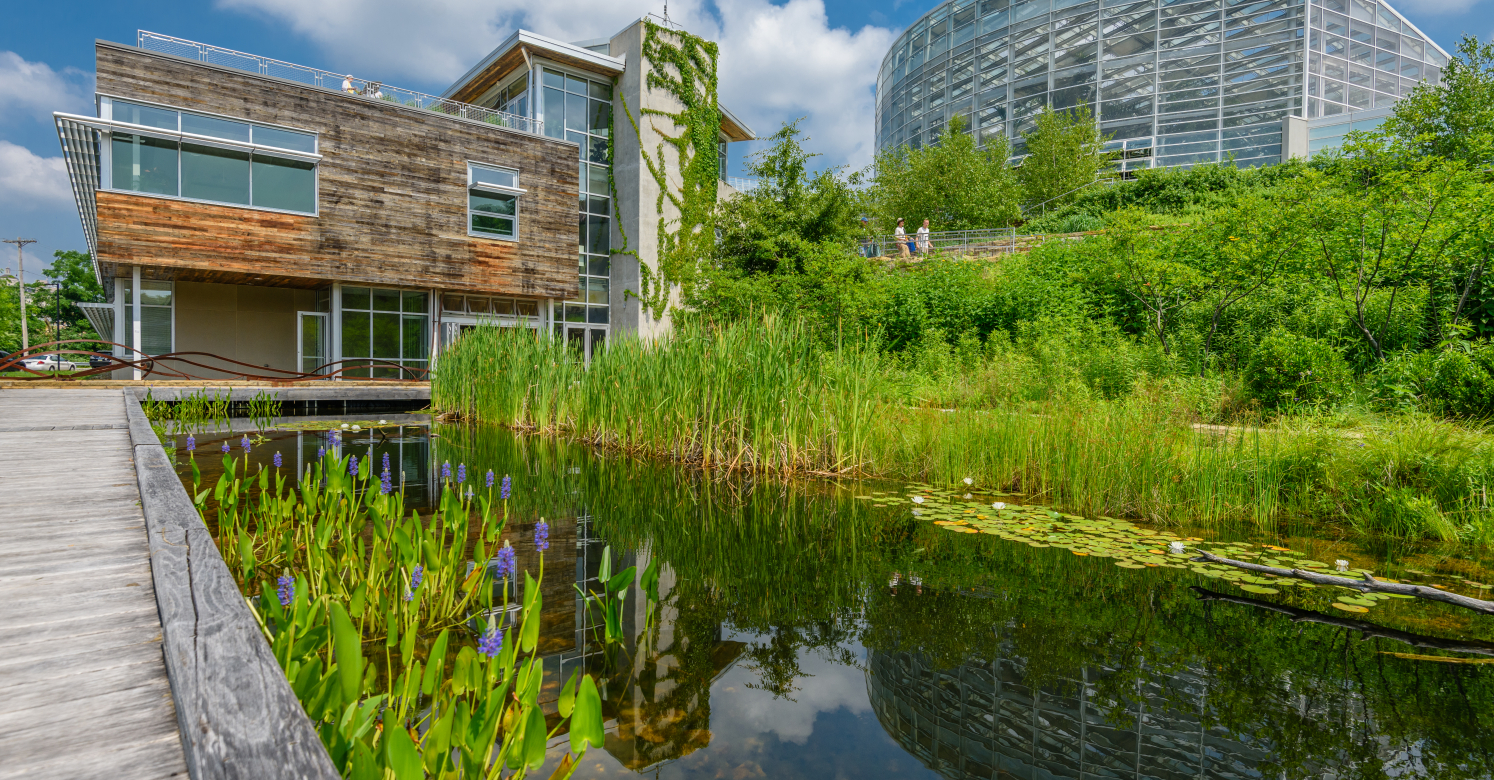
It just might be.
Opened in 2012, the Center for Sustainable Landscapes (CSL) — an education, research and administration facility at Phipps Conservatory and Botanical Gardens in Pittsburgh, PA — seeks to change the conversation around climate change and demonstrate a new way forward to address this critical issue. The CSL demonstrates the critical role the built environment has to play in setting an aspirational, influential and beautiful example of how buildings and their occupants can interact with the world. By generating all its own energy and treating all rain and sanitary water captured on-site, the CSL shows that instead of being the single biggest users of energy, buildings — even office buildings — can seamlessly blend into their landscapes to provide space for native plants to thrive and habitat for wildlife, going beyond sustainability to play a regenerative, value-adding role for all the living things that interact with them.
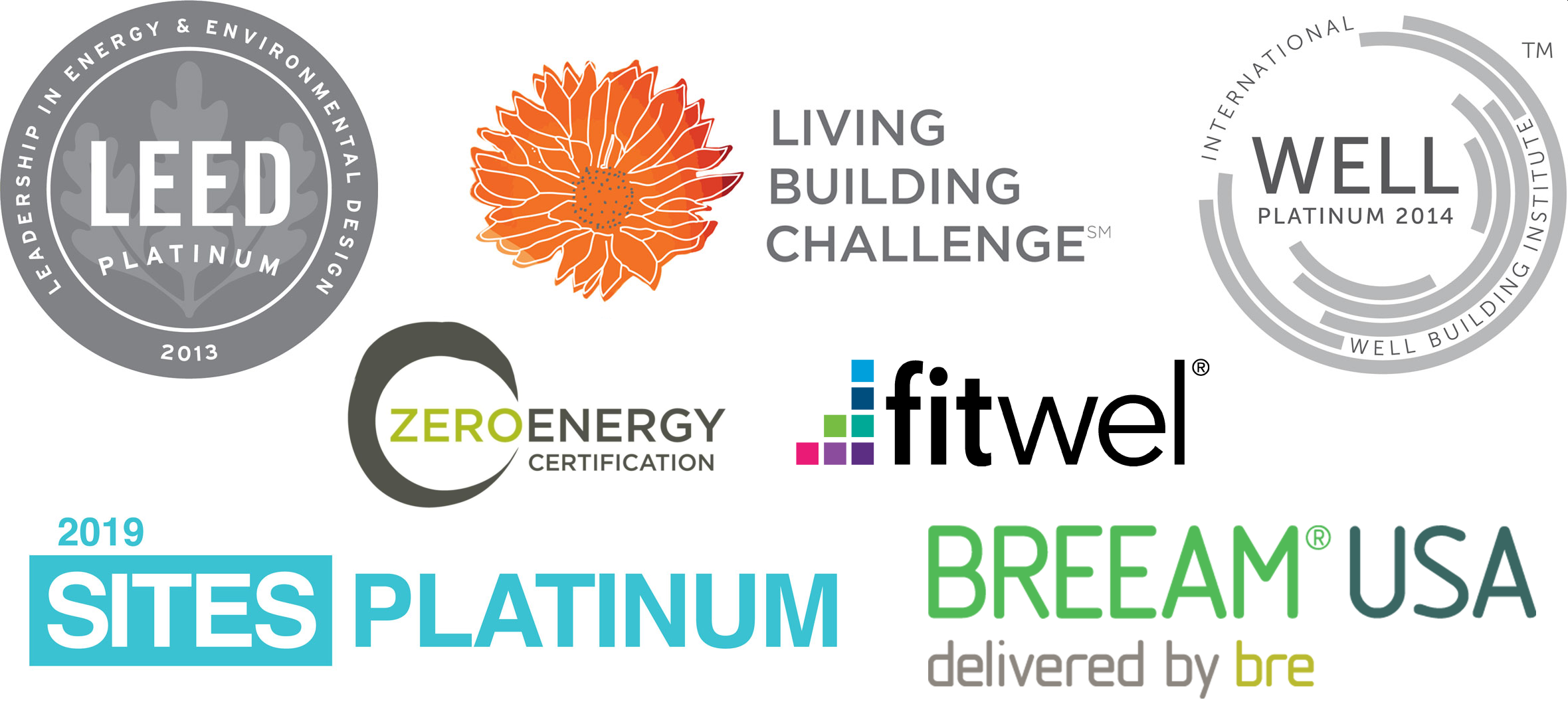
After ten years, the CSL is still the only building in the world to meet seven of the highest green certifications related to human and environmental health: the Living Building Challenge, the world’s most rigorous green building standard; LEED® Platinum, where it tied for the highest points awarded under version 2.2; WELL Building Platinum, in which it was the first Platinum-certified project; SITES™ Platinum, in which it was the first Platinum-certified project; Net Zero Energy Certification; BREEAM Outstanding In-Use, which it was the first building in the United States to achieve; and Fitwel 3 Stars.
More than 80 Sustainable Awards and Honors
For its groundbreaking efforts in sustainable leadership, Phipps is the recipient of more than 80 professional national and international awards.
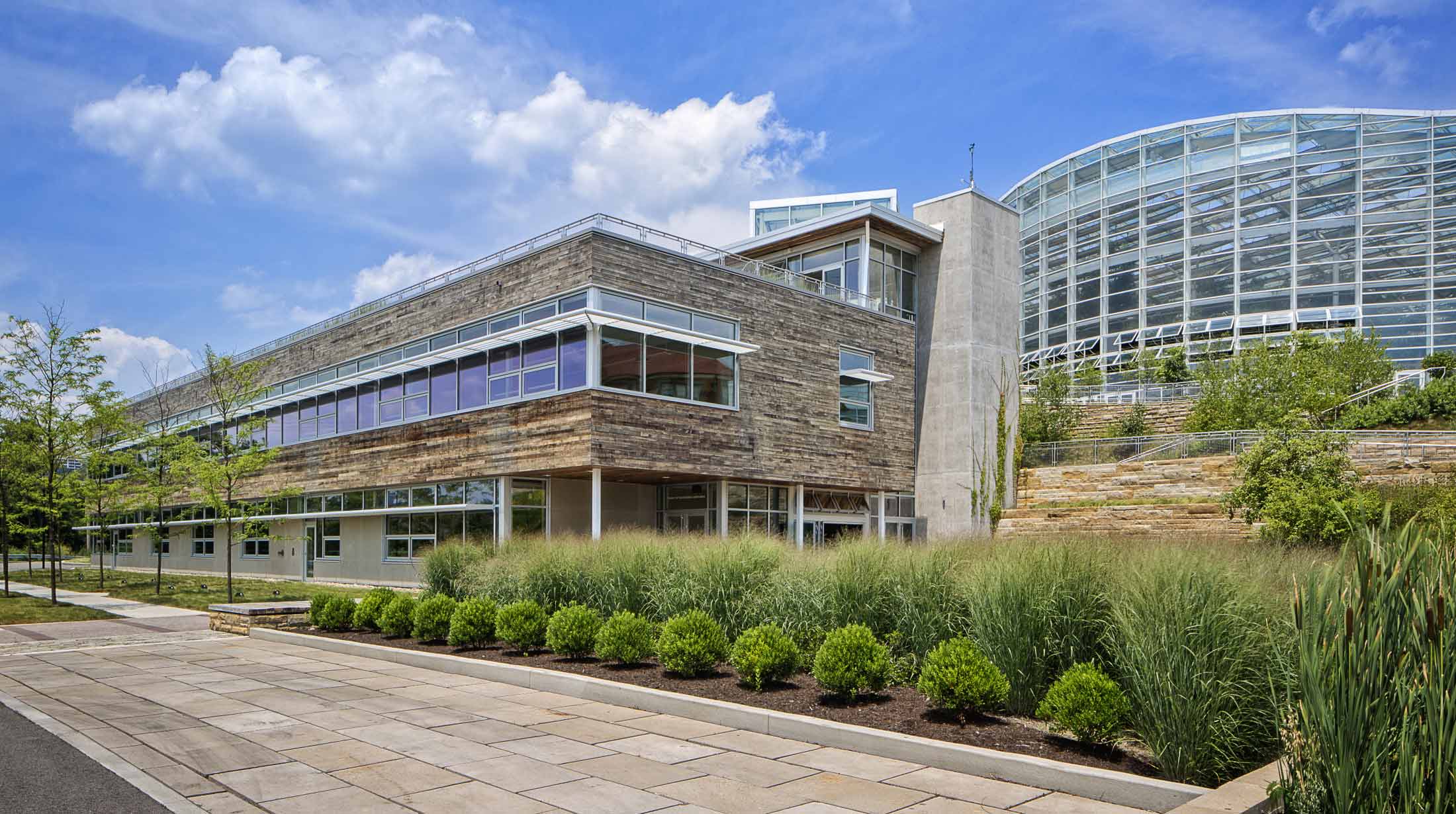
To contextualize Phipps' modern era of green innovation, let’s look back at the steps that led to this watershed moment.
The First 100 Years
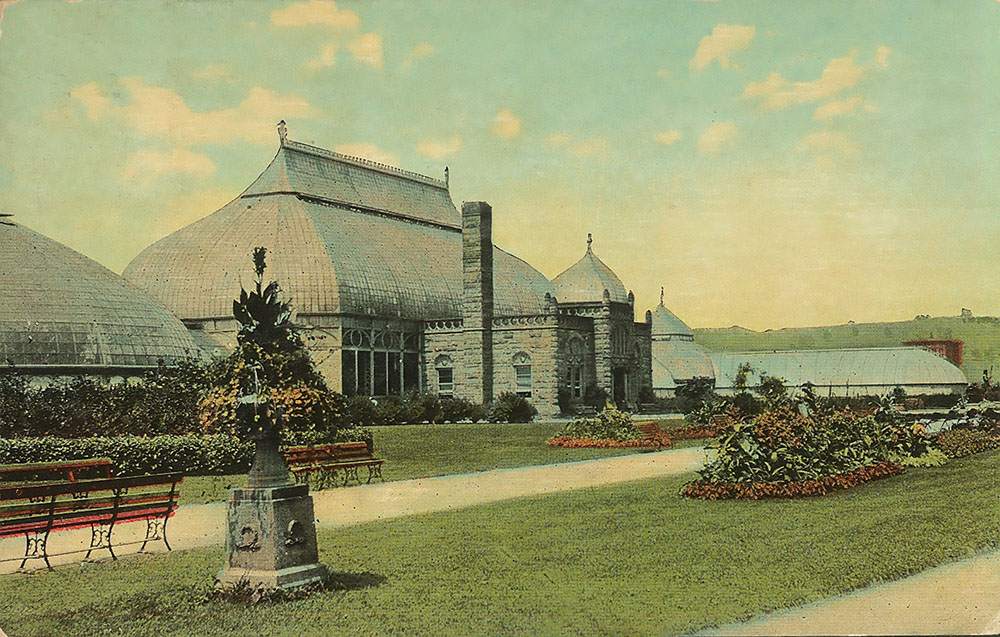
Built in 1893 by philanthropist and steel magnate Henry W. Phipps and gifted to the City of Pittsburgh as a source of instruction and pleasure for the people, Phipps Conservatory and Botanical Gardens has been a cultural centerpiece in the Pittsburgh region for the past 130 years. But the original Victorian glasshouse of Phipps Conservatory was constructed at a time when people thought natural resources were limitless and the associated pollution was a signifier of technological progress — a time when humans thought that they could conquer nature. Against this backdrop, Phipps quickly established itself as a showcase for horticultural excellence and education, a distinction it still holds today. But it was not until after 100 years of operation, when the Conservatory was transferred to nonprofit management, that a new era began — one in which the public garden’s mission expanded to communicate not only the beauty of the natural world but also recognize our role as living beings nested within the ecosystem. Today, Phipps is setting the pace globally for green buildings and operations, sustainable development and environmental outreach.
More Early Milestones

Click "Learn More" to discover key milestones in the early days of Phipps' sustainability journey, including the constuction of our Welcome Center, Tropical Forest Conservatory and Production Greenhouse.
Welcome Center
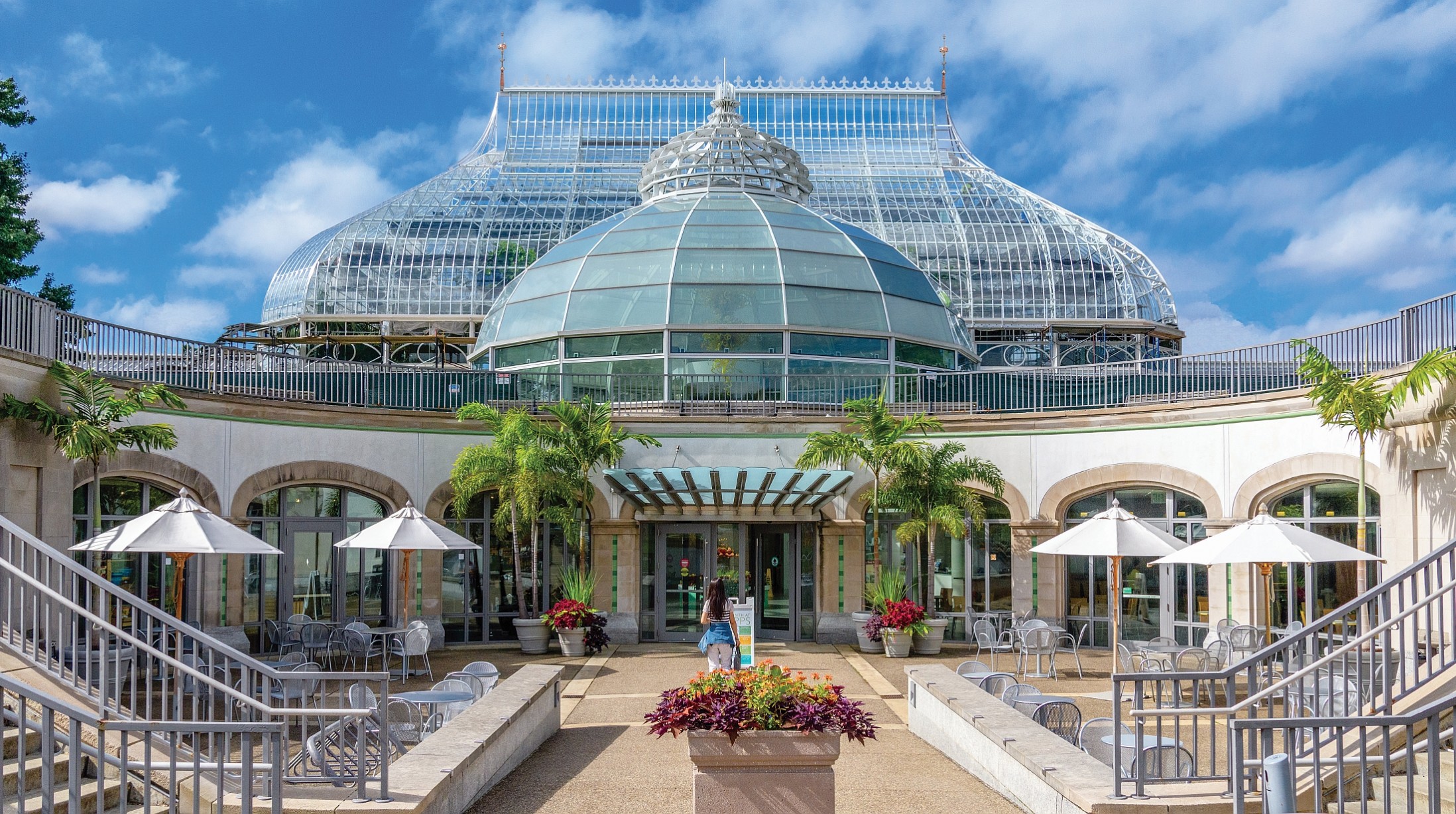
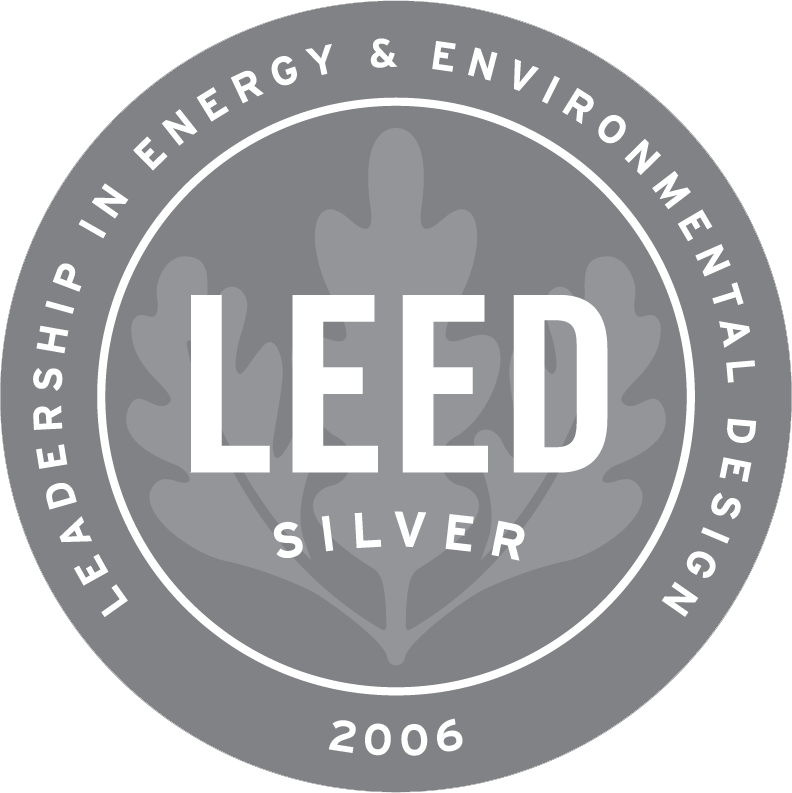
To achieve their mission of connecting people with nature, Phipps became interested in building green facilities. This journey began in the late 1990’s when we first learned about LEED and resulted in 2005 with the construction its new Welcome Center. Featuring a revolutionary design that complements the original Victorian conservatory and does not obstruct the historic view of this iconic beauty from the front lawn, the Phipps Welcome Center accommodates Phipps’ admissions area, café, gift shop and other visitor amenities. Fritted glass on the dome and windows filters natural daylight into interior spaces, reducing the need for artificial lighting and a green roof covers most of the building — the building is nestled in the ground providing a heat sink that reduces the energy required to heat and cool the space.
Earning LEED Silver certification, the Welcome Center became the first LEED Certified visitor center in a public garden. It was this process that made Phipps an early leader in the green building space and was Phipps’ entrance to the campus-wide initiative to make every decision, not just building projects, demonstrate the beauty of living in harmony with the natural world. After switching to 100% renewable energy for our entire campus in 2005, the café eliminated disposable serviceware, bottled water, soda, junk food and factory farm meat to create a more environmentally conscious dining experience.
Tropical Forest Conservatory
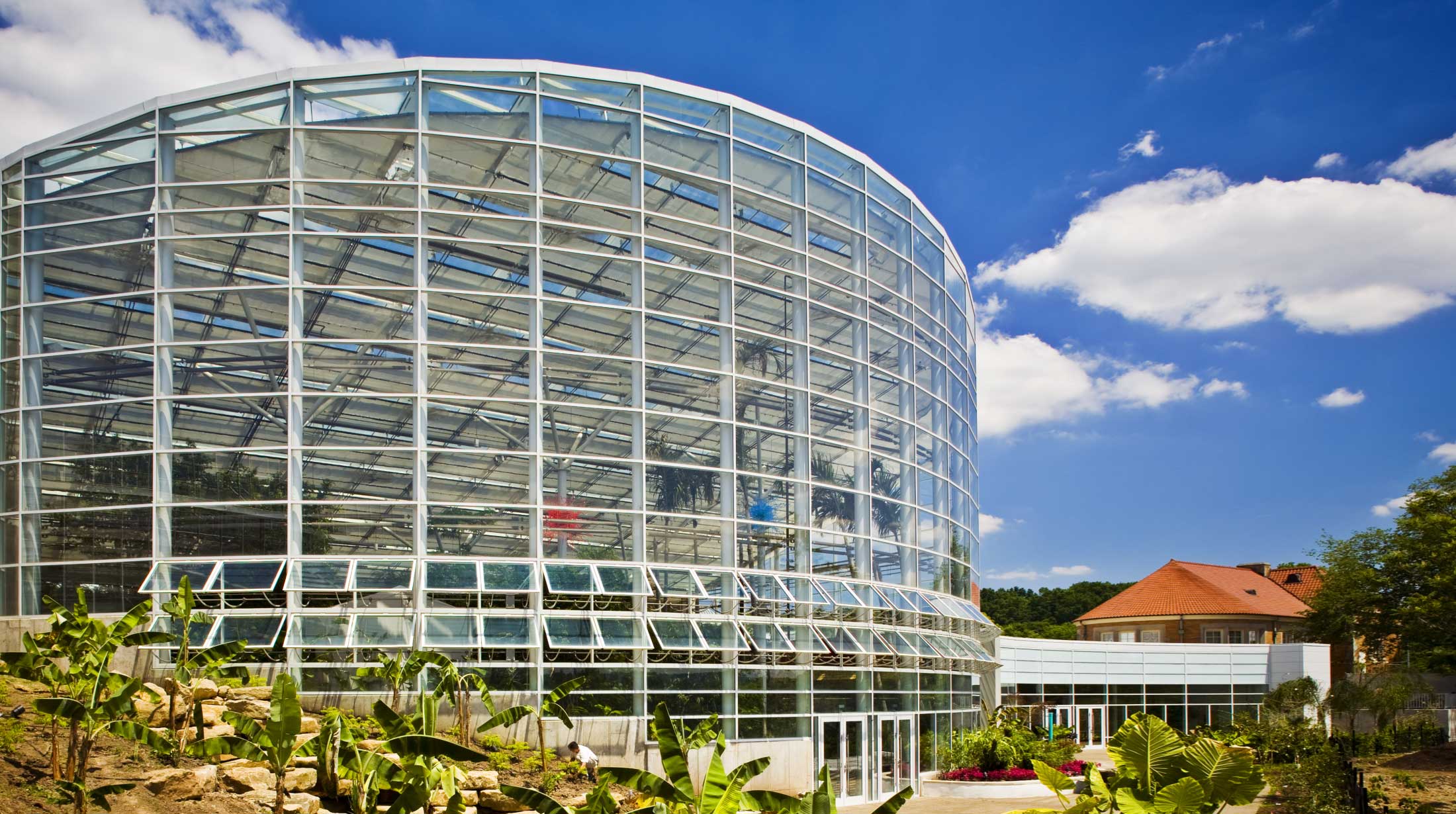
In sharp contrast to Phipps’ 1893 glasshouse, which was designed with the prevailing technology of the time and relied upon limited passive ventilation systems that poorly regulate interior temperature, the Tropical Forest Conservatory utilizes an unconventional design including massive roof venting and 1800 feet of underground earth tubes, resulting in 40 percent less energy use than traditional glasshouses. It is a greenhouse that has no greenhouse effect. Celebrated for this efficiency when it opened in 2006, the impressive 60-foot-high, 12,000-square-foot Tropical Forest Conservatory takes visitors from Pittsburgh and beyond on a colorful and inspiring journey through some of the most botanically rich regions of the world. Incorporating impactful ethnobotanic displays, cascading waterfalls and lush greenery, this state-of-the-art facility demonstrates how favoring a fresh approach over past conventions can provide solutions to nearly any sustainability challenge.
Production Greenhouse
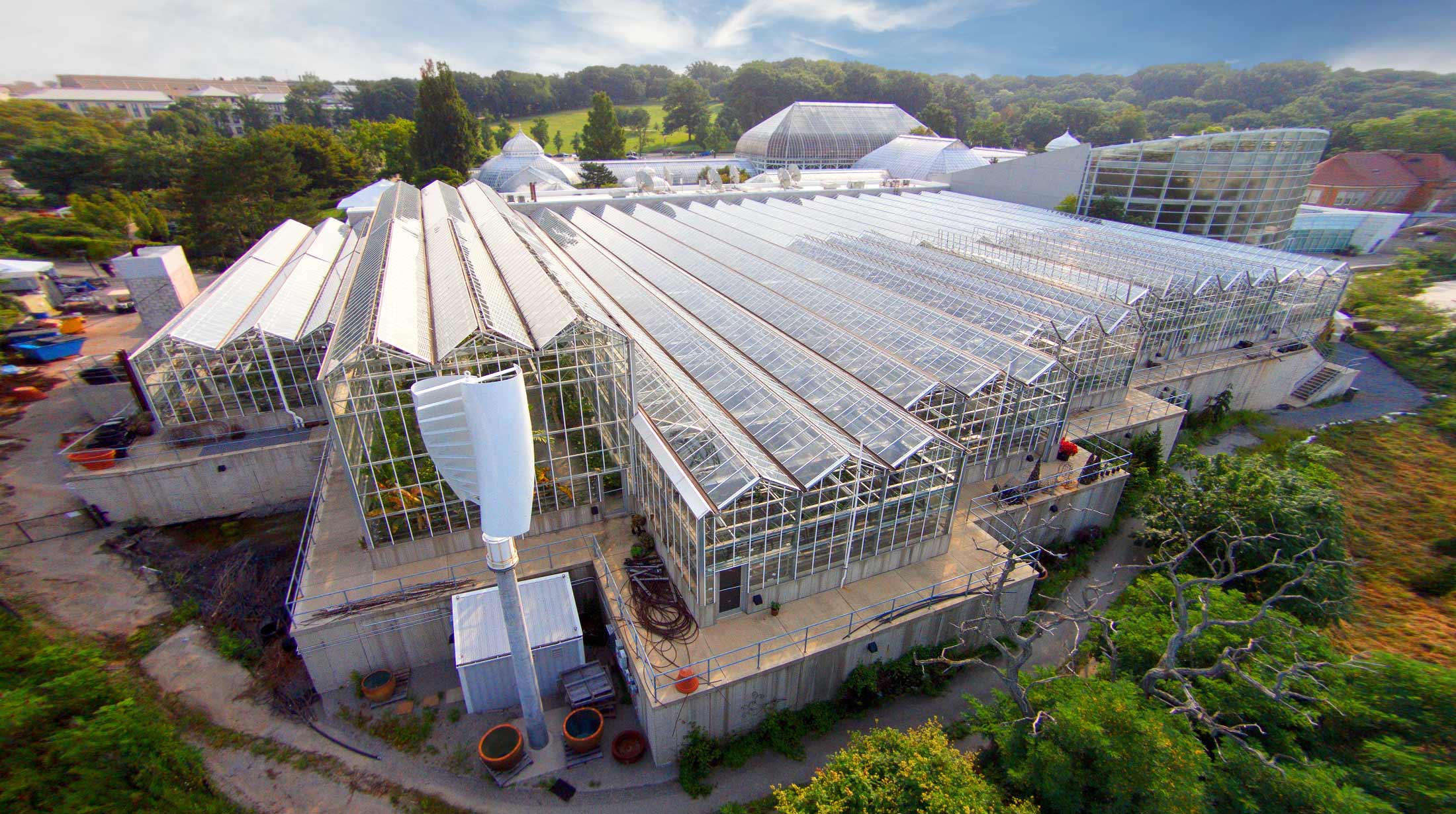
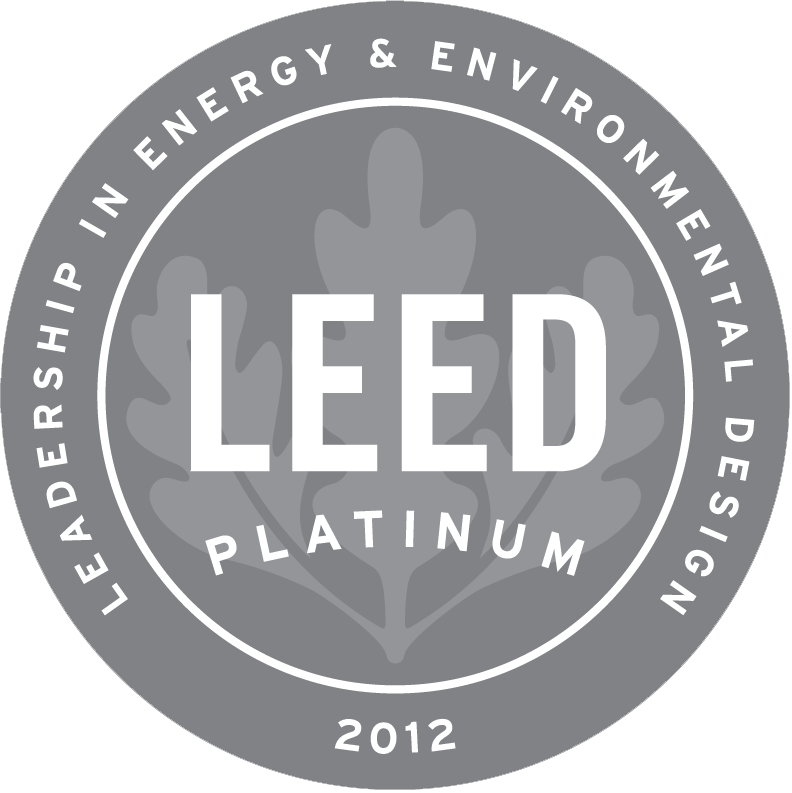
Adjacent to the Tropical Forest Conservatory is the Production Greenhouse, a 36,000-square-foot facility where horticulturists grown and maintain Phipps’ collection that is not on display. Among the Production Greenhouse’s most notable features is an innovative open-roof system that allows for maximum temperature and ventilation control. The roof vents are tied into an anticipatory control system that ensures that the facility is optimally heated and cooled while taking advantage of natural ventilation, eliminating the need for costly exhaust fans. Energy blankets on the roof can be drawn on cool evenings to prevent heat loss. Water usage is closely monitored and adjusted to minimize impacts during dry spells, and Phipps continually innovates new ways to capture rainwater on site for irrigation. The combination of these strategies allows Phipps’ Production Greenhouse to operate 33 percent more efficiently than similar greenhouses and earned the structure LEED® Platinum for Existing Buildings: Operations and Maintenance, making it the first greenhouse ever to earn LEED certification.
Center for Sustainable Landscapes
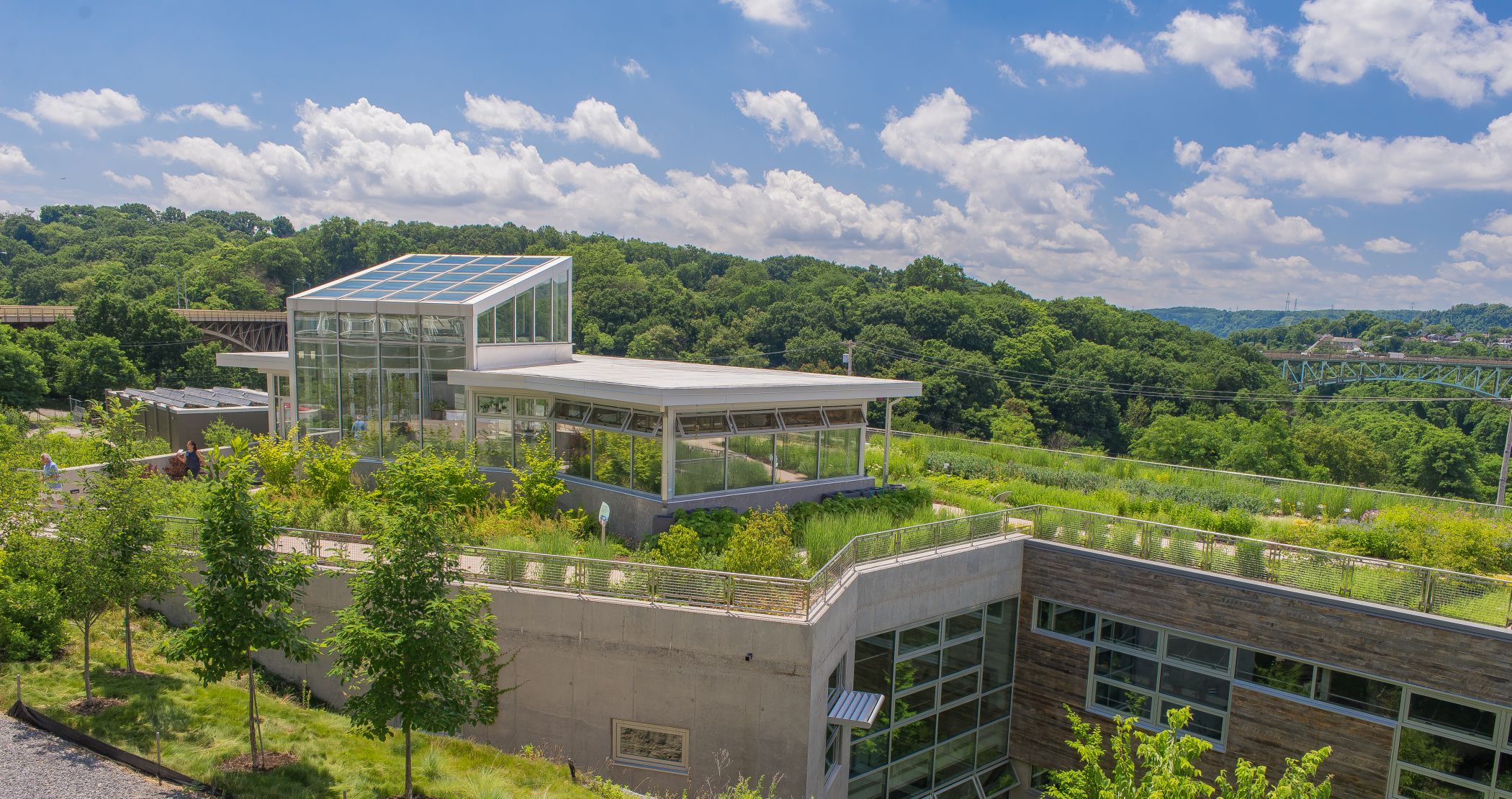
We spend 90% of our lives in buildings, so what happens in them has a major impact on our health and how we relate to the world. Unfortunately, these same buildings isolate us from nature. The Center for Sustainable Landscapes (CSL) seeks to blur the line between the built and natural environments, paving a new way to design, operate, live, work and play in places that honor our inherent connections to natural systems.
With its 24,350-square-foot CSL, Phipps elevated green building design to a new level of excellence. This research, education and administration facility operates as elegantly and efficiently as a flower, using 70% less energy than a typical office building. The relatively little energy it needs is generated onsite using solar and wind power. Constructed to be Red List free without many of the conventional building materials found in most buildings that may off-gas pollutants or be hazardous to the health of occupants, the CSL features high indoor air quality and every occupied space affords views of nature. All of the sanitary water that leaves the buildings travels through a constructed wetlands system that cleans the water for reuse in flushing the toilets all over again.
Nestled into a hillside on Phipps’ campus, the CSL is a building fully integrated into its landscape. Starting with a dilapidated brownfield, the three acre ashphalt paved site was once a public works yard and included a fueling station for the City of Pittsburgh. Phipps had to revitalize the building’s surroundings from scratch, utilizing indigenous, sustainable plants and soil. Today, the transformation is stunning: a terraced garden leads downhill from the roof to the ground floor of the CSL, allowing visitors to walk through beautiful trail of native plant communities, including wetland, oak woodland and upland groves. Between the surrounding landscape and the building’s lush green roof, over 100 species are represented, providing excellent habitat for local birds, bees and butterflies which are now seen regularly on the site. In addition, the building’s 4,000-square-foot lagoon, essential for the rainwater capture component of the CSL’s net zero water strategy, is now a home to an aquatic ecosystem with native fish and frogs. The site also manages all rainwater from the 3-acre site, sending no runoff to Pittsburgh’s overtaxed combined sewer system.
More Net-Zero Energy Buildings

After the CSL, Phipps constructed two additional net-zero energy buildings on its campus. Click "Learn More" to learn about the Nature Lab and Exhibit Staging Center.
Nature Lab at Phipps - Our Second Net-Zero Energy Building
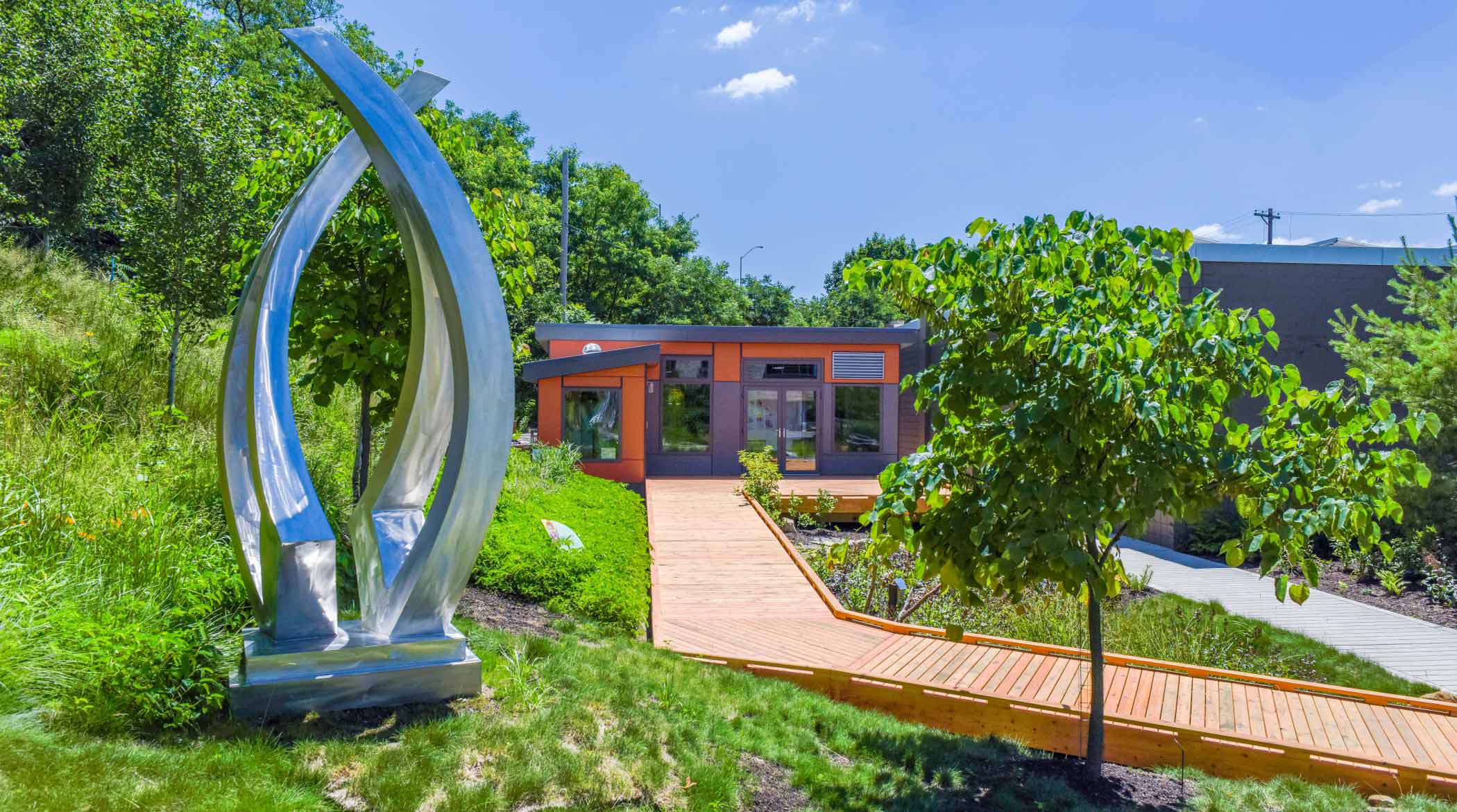
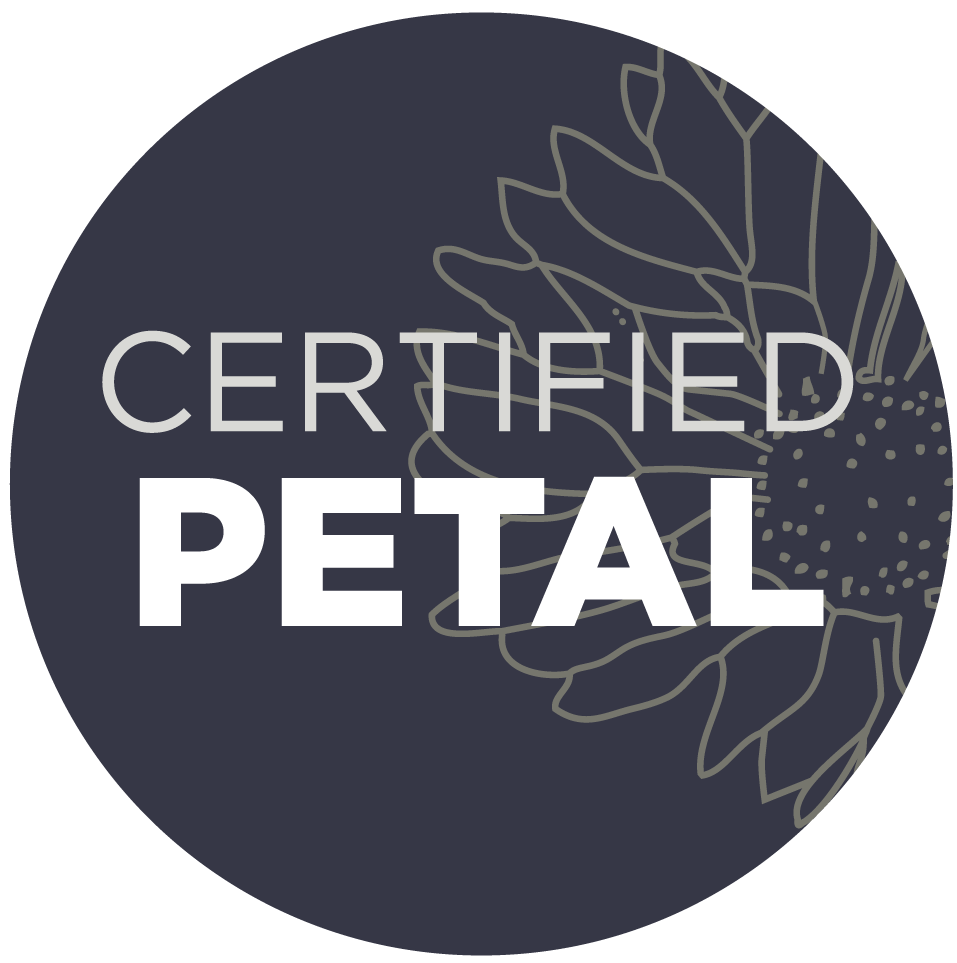
Following the opening of the CSL, Phipps sought to construct one of the nation’s first sustainable, modular classrooms as part of its larger efforts to highlight the important connections between people, buildings and the environent, particularly as they relate to children, some of the most vulnerable members of society. Approximately one in three schools in the U.S. currently use modular units, which provide a quick solution for expansion but are commonly cited for the potential health risks they pose due to poor ventilation, compromised indoor air quality, high levels of toxins, mold, excess moisture, inadequate lighting and lack of natural daylight. Using the guidelines of the Living Building Challenge, the Nature Lab reinvents the modular concept, daring to imagine a learning space that is net-positive energy, net-zero water, is built with non-toxic materials, includes ample daylighting and creates a space that fosters inspiration, education and beauty.
Most significant of all is the Nature Lab's role as a publicly accessible model for replication that calls attention to the importance of providing healthy learning environments for children and demonstrates how classrooms of the future can be built to maximize student wellness and potential.
Exhibit Staging Center - Our Third Net-Zero Energy Building
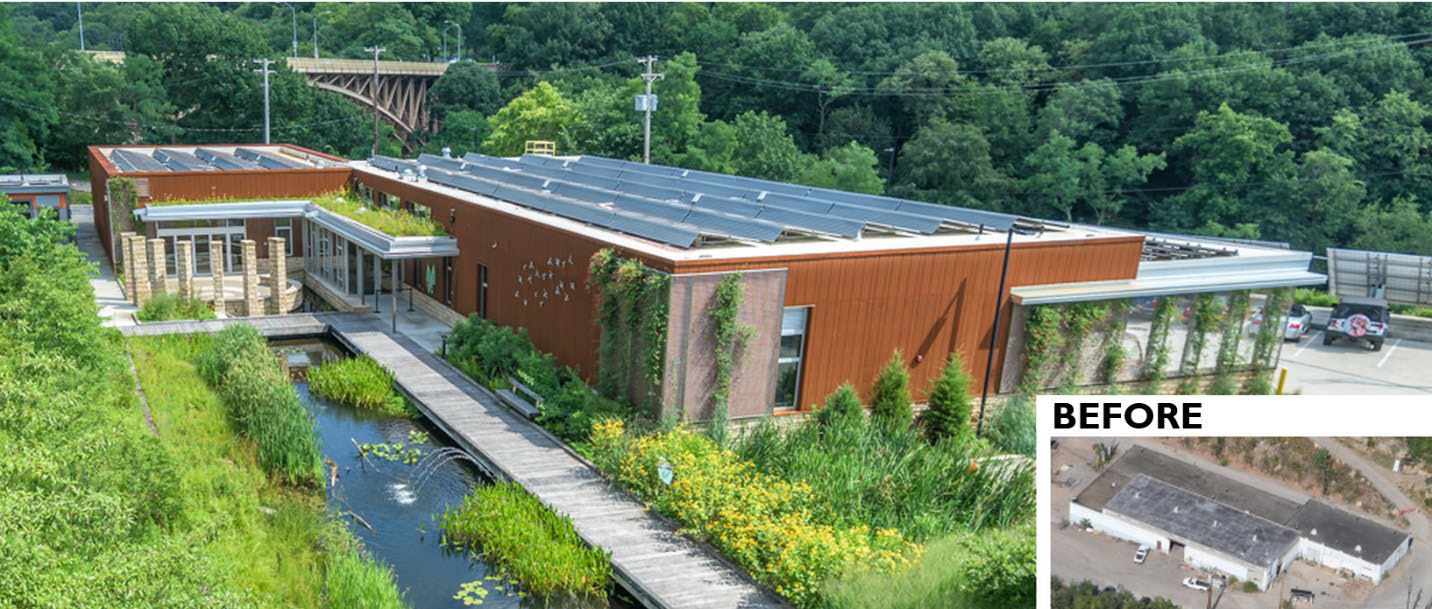
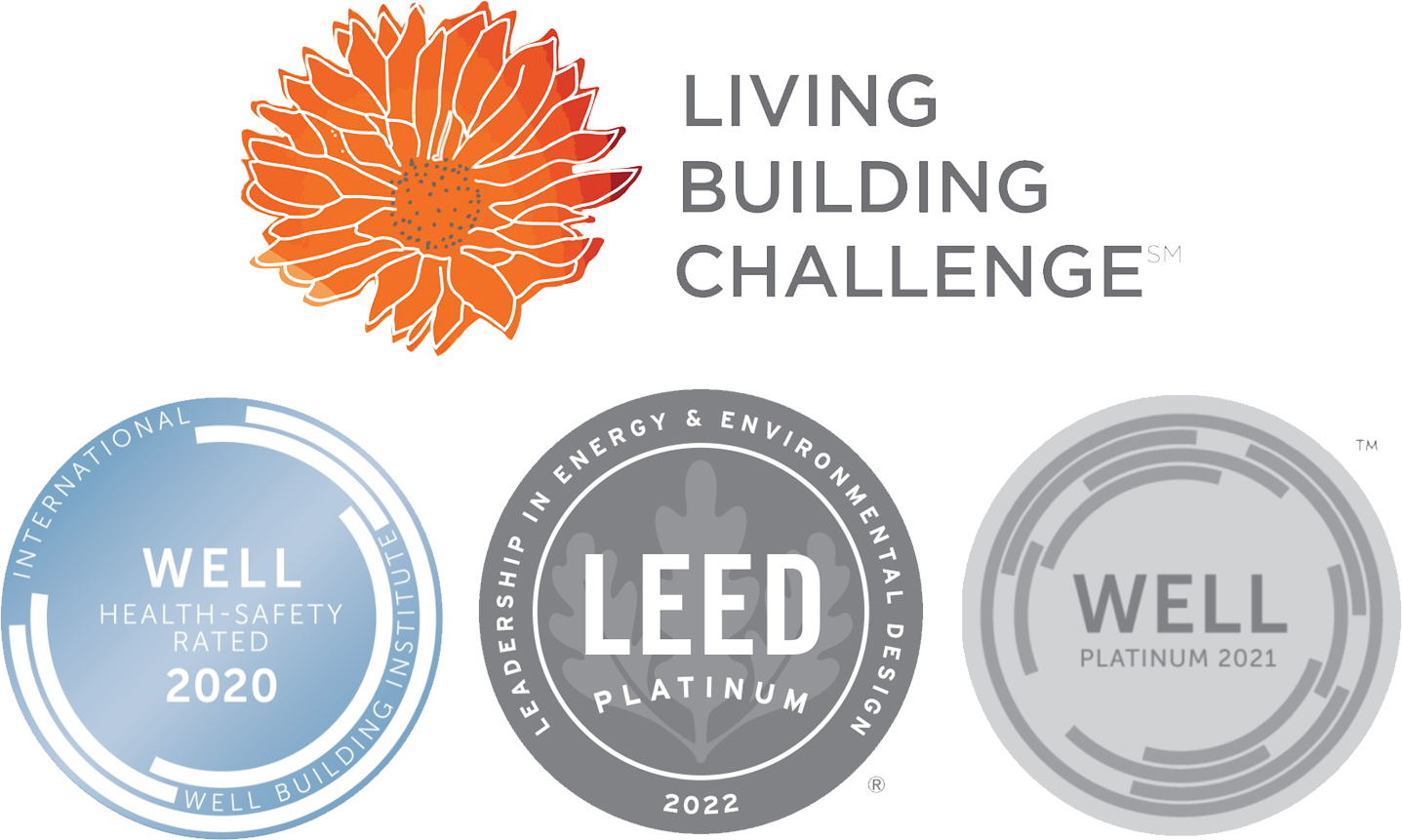
For decades, a dilapidated cinder block public works building sat on Phipps’ lush urban campus. Where others may have torn the building down, we saw an exciting challenge — if we transformed it into one of the greenest buildings in the world, it would help prove that any building can become green and could showcase to the garden’s half a million annual guests that even existing buildings can become beautiful and comfortable places to live, learn, work and play. And since the primary occupants would be maintenance staff, who in addition to children, tend to get some of the worst buildings, the team focused on occupant health, recognizing that environmental equity is as important as solar panels and building efficiency.
In 2019, Phipps opened an adaptive reuse of the original building as the Exhibit Staging Center (ESC) with a dynamic, modernized design and the ambitious goal of achieving three of the world’s most rigorous building standards: Living Building Challenge (achieved June 2023), LEED® Platinum (achieved April 2022) and WELL Platinum (achieved June 2021). The former 1960s windowless public works building now showcases the latest green building technology, transforming a degraded space on a former brownfield into a place dedicated to the well-being of its occupants and visitors, the site’s ecology and the habitat of native species.
The restoration did not simply minimize negative environmental construction impacts, but was regenerative, actually improving the health of the ecosystems in which it is nested while providing a healthy space for employees and guests. Building occupants and visitors benefit from ESC’s features: The team avoided Living Building Red List materials, which contain chemicals designated as harmful. The building houses an exhibit fabrication workshop, grounds maintenance, storage rooms and office space, and a yoga studio, meditation room and fitness center available to all staff.
The ESC proves that the greenest buildings can be ones that already exist. With the right priorities, even the least healthy spaces can become ones that are good for people and the planet.
Beyond complex mechanical systems and singular energy performance, Phipps’ green buildings had to resonate with people. In order for people to want green buildings, they have to be better than what we experience now. They must be beautiful, designed with the comfort and enjoyment of the occupants in mind. In fact, one petal of the Living Building Challenge focuses on Beauty, stating: “The Living Building Challenge envisions designs that elevate our spirits, connect us to nature and all other living systems and inspire us to be better than we currently are.” This is essential in realizing a building that is not only one of the greenest on Earth, but one that enriches the lives of its occupants and visitors. The CSL, Nature Lab and ESC will be more economical in the long run than a conventional building, refuting the “going green is expensive” excuse. It is also important to bear in mind that the cost of business as usual — building in a way that does not take into account the health of people and the ecosystem — is simply too high. We can longer afford to be so nearsighted in our approach and these three buildings — reflecting new construction, modular and adaptive reuse — demonstrate what is possible.
By showing guests what “good” looks like, then removing barriers to help them start on a more sustainable path in their own lives, Phipps is demonstrating the beauty of living in harmony with the natural world.
The Climate Toolkit
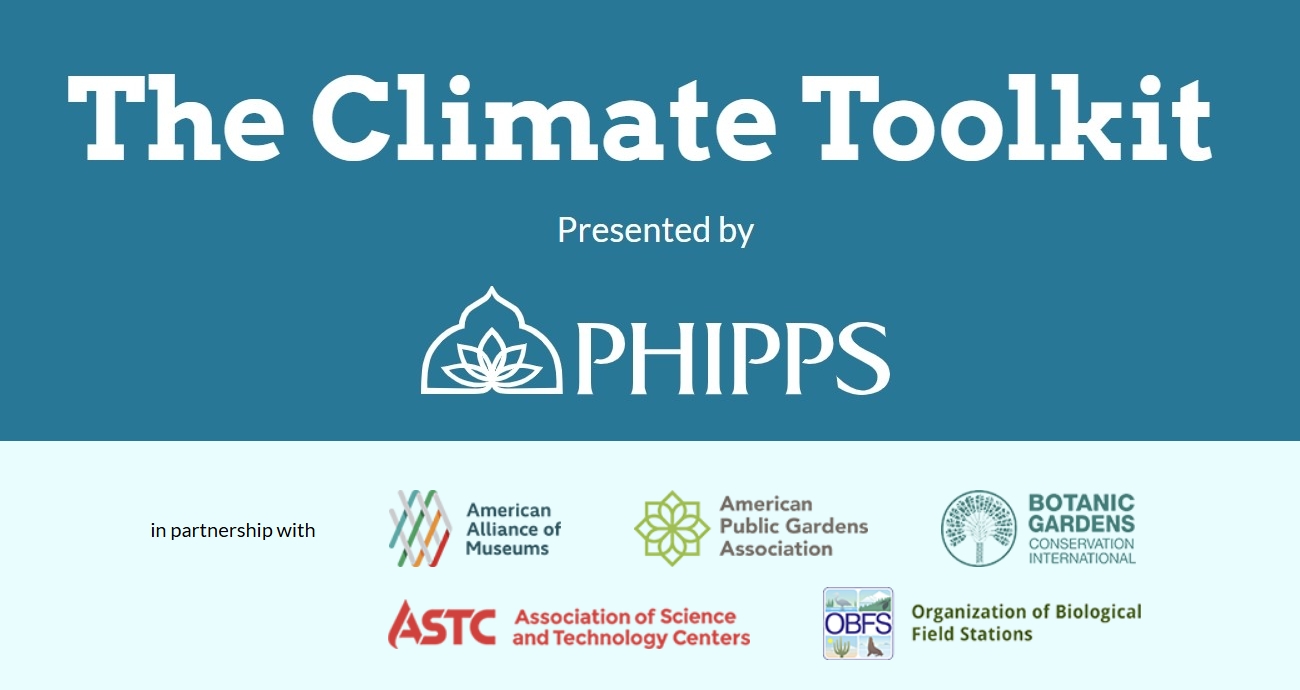
To make an impact beyond its own garden, Phipps launched The Climate Toolkit in 2020 to help gardens, museums and zoos address climate change. Now with 250 institutions from 30 countries serving more than 123,000,000 annual visitors, the Climate Toolkit acts as a resource for each institution to learn about how they can address climate change in a way that makes sense for them and their community. In addition, on-site at Phipps, highly motivated high school and college-age youth can join the Youth Climate Advocacy Committee to develop environment-related projects. The purpose of the program is to support youth in initiatives that they think are important, to engage them in learning about regenerative thinking and to connect them with youth climate groups at other institutions.
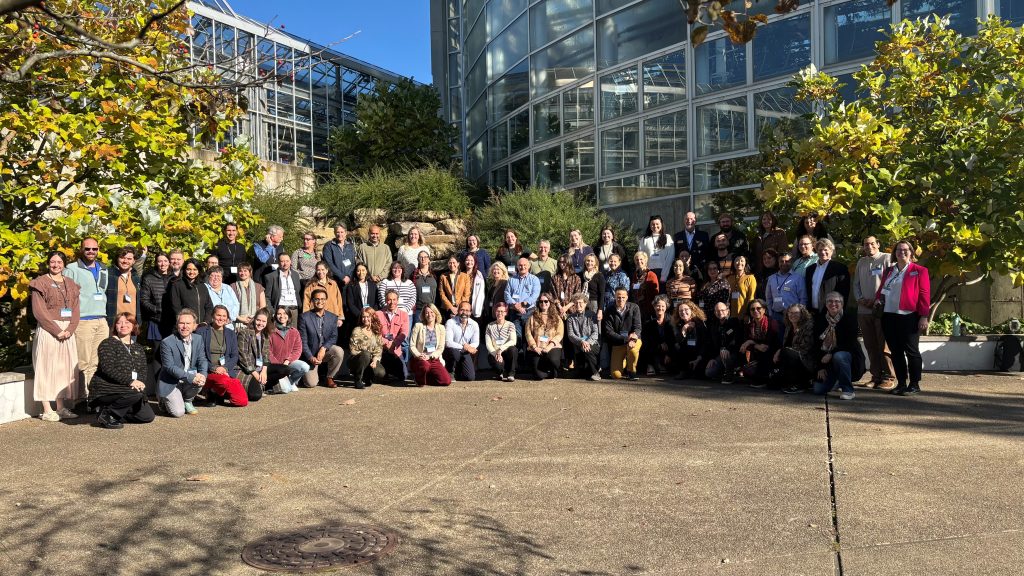
Operations and Programs
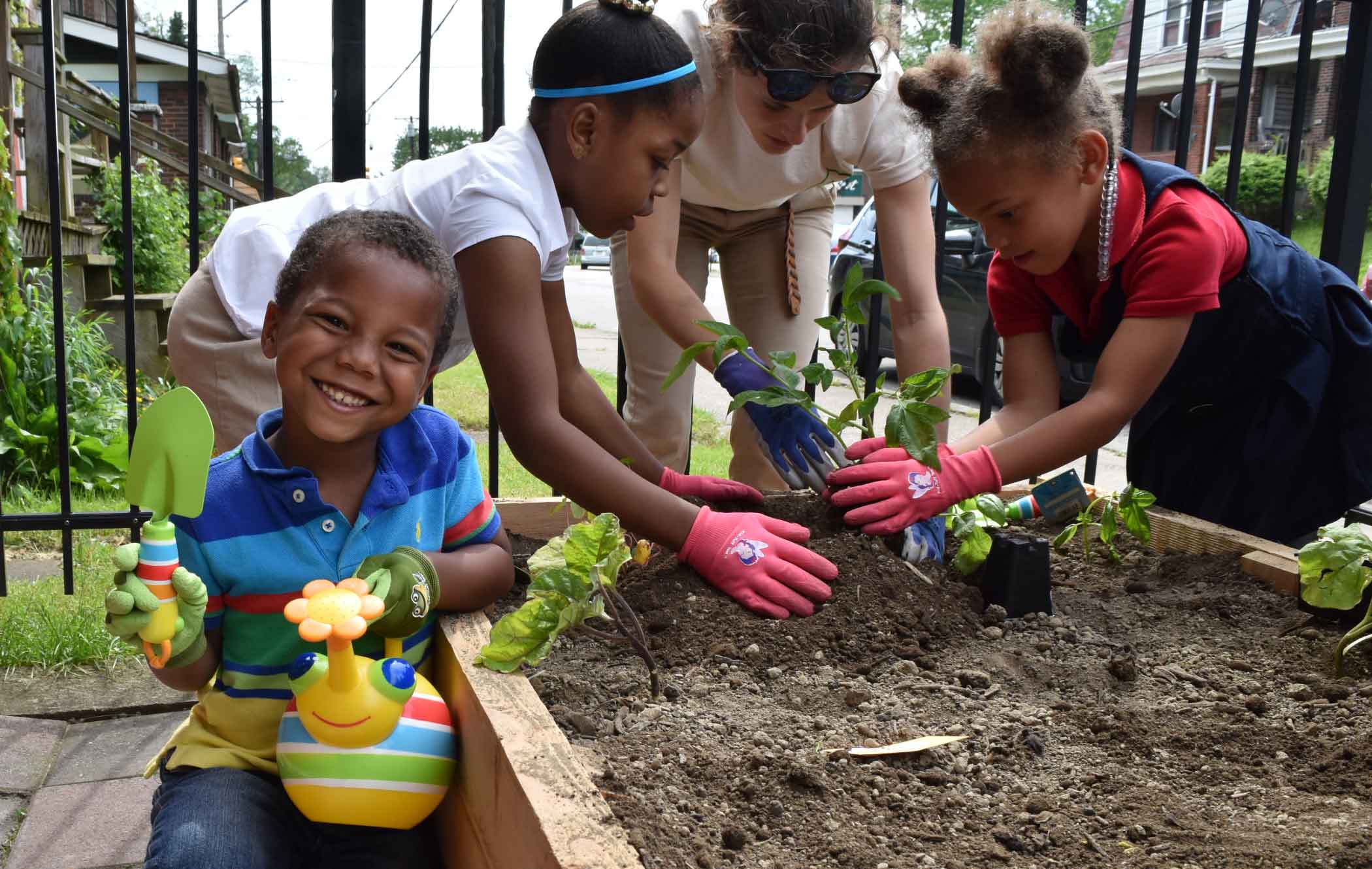
The construction of green buildings on the Phipps campus initiated a sustainable revolution that has changed everything Phipps does, from horticultural and operational practices to community outreach and education.
More Programs

Click "Learn More" to discover some of Phipps' most prominent efforts to bring its sustainable message to the community, including the Homegrown Edible Garden Program, Biophilia Symposia and Green Power Drive.
Homegrown
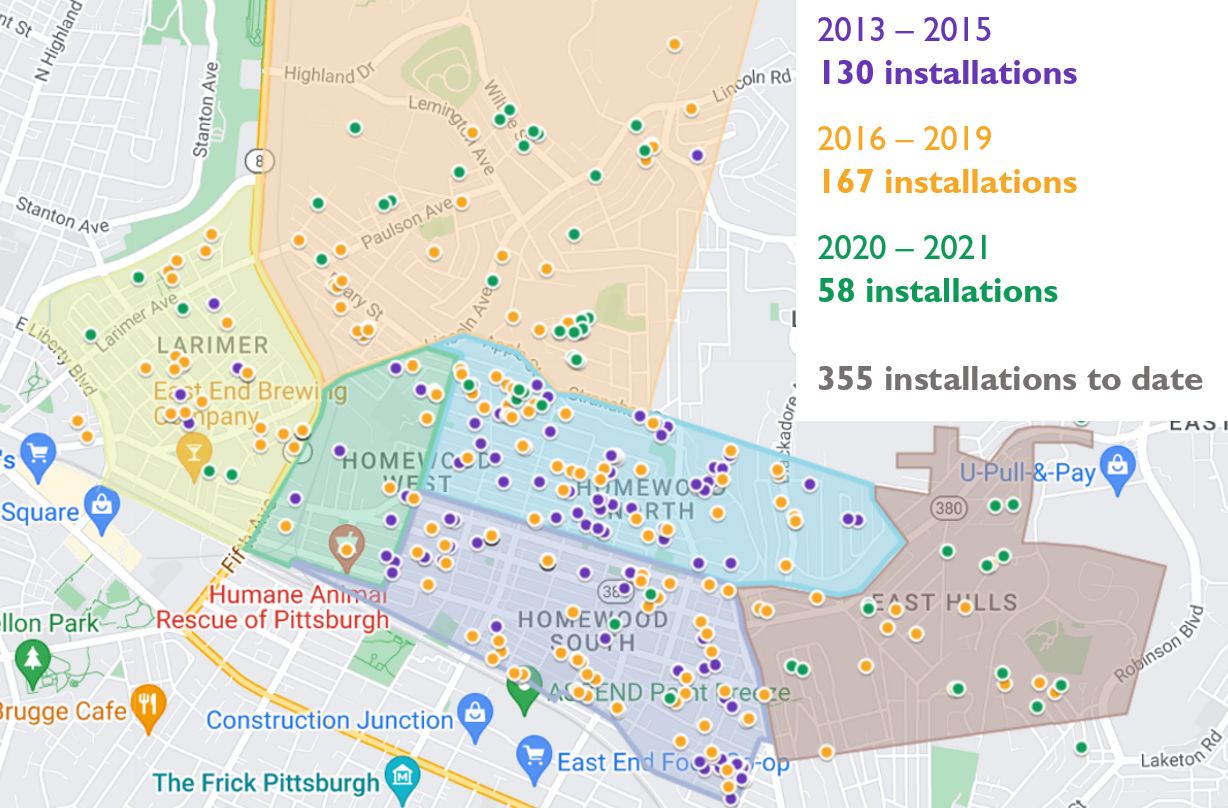
A public garden can serve many functions — from education and entertainment to tranquility, gardens offer a variety of benefits to match the needs of those who visit them. But sometimes a garden needs to push beyond conventional scope, going directly to affected communities to make changes from the ground up. Studies conducted by the USDA were among the first to identify “food deserts” — urban neighborhoods without ready access to fresh, healthy and affordable foods. Over seven percent of Americans live in food deserts, placing them at increased risk for obesity, diabetes, heart disease and other ailments. To address this challenge locally, Phipps Conservatory and Botanical Gardens launched the Homegrown edible garden program.
Homegrown installs free raised bed vegetable gardens at households, provides mentorship and resources, and creates a lasting impact on our local communities. The raised bed model helps addresses long-standing issues of soil lead contamination rampant in Pittsburgh’s urban core. Since its inception in 2013, Homegrown has installed vegetable gardens for over 350 families and provided training and knowledge to hundreds of additional community members. The success of the program has been evident for nearly a decade, ensuring the continuation and expansion into other underserved audiences, helping facilitate significant positive health outcomes for families and partner communities.
Symposia
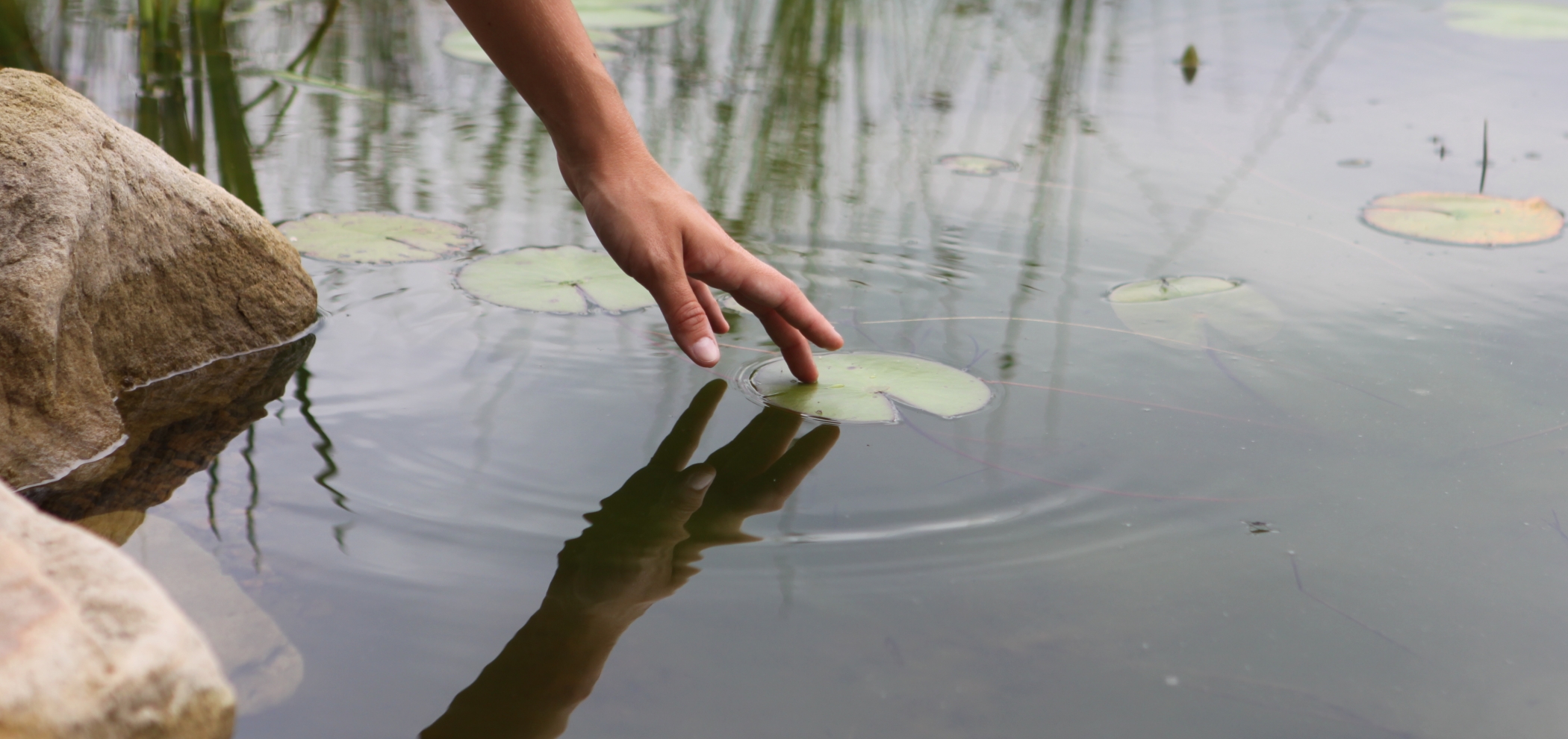
Through its symposia, Phipps honors a tradition of unitiing leaders and changemakers to explore global and local environmental issues and their effects on human and environmental health. In 2025, The Climate Toolkit Symposium invited cultural institutions from around the world to strengthen relationships, spark conversations and collaborations, and work toward greater efforts in climate-aligned operations and impactful public engagement. In prior years, the One Health One Planet Symposium brought an interdisciplinary thought leaders to explore global and local environmental issues and their effects on human, animal and environmental health as a catalyst for positive change, while the Nature of Place Symposium examined the relationship between health and the built and natural environments in which we live, work, learn and play in the context of urban planning and the importance of access to public green spaces.
Green Power Drive
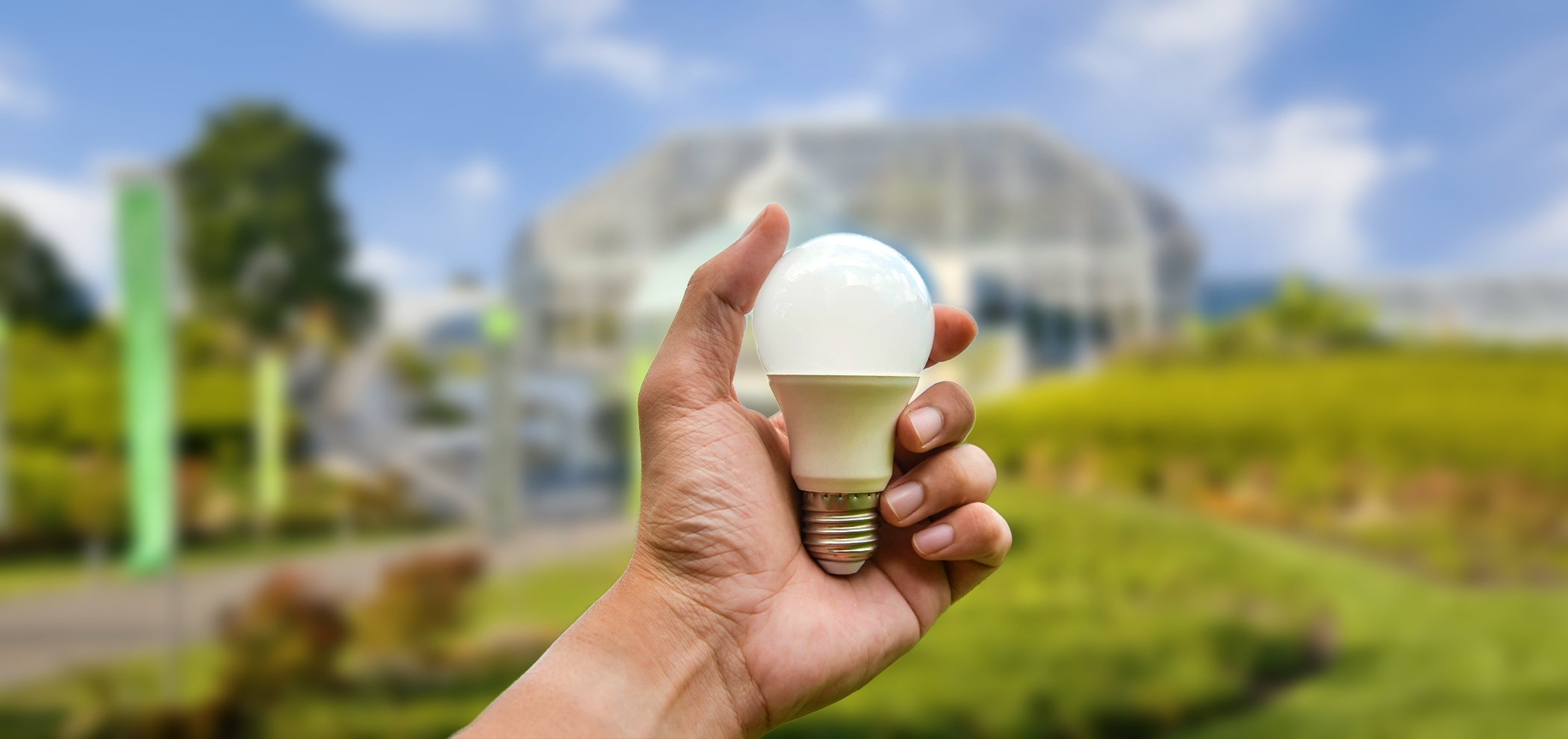
Nearly nine out of 10 Phipps guests surveyed in 2016 considered climate change a threat “now or in the future.” In 2017, Phipps set a principal goal of demonstrating to guests that each us can have an impact and that addressing this critical issue is something in which each individual can take part. With this in mind, Phipps launched the Make the Switch at Phipps! Green Power Drive, conducted through a special partnership with a green energy provider. Seven days a week, they manage a station in Phipps’ Conservatory where guests can switch their home electricity to 100% green power right on the spot, and those that do are given a free Phipps membership.
Through this innovative effort, which directly impacts the voluntary market for green power, guests are incentivized to switch to renewable energy and to deepen their engagement at Phipps in one easy and powerful action. Since the launch of the Green Power Drive, over 7,200 households have converted to green power, mitigating at least 59,000 tons of carbon dioxide emissions, or the equivalent of saving 124,000 barrels of oil from being burned, or 136 million miles driven by an average gas-powered passenger car every year. And the numbers are growing every day.
Timeline of Initiatives
2005
First LEED Visitor Center in a Public Garden
100% Renewable Electricity Campus-wide
2006
No plastic disposable service ware
2009
No disposable bottled water
2010
Offset all carbon produced to heat all our buildings
2011
No soda no junk food in café
No factory farm meats
2012
First Zero-Energy Building
2015
Second Zero-Energy Building
Divested from fossil fuel investments
2017
Switch to ESG Socially responsible investments
2018
Third Zero-Energy Building
Focus on reducing single use plastic
2019
Greater than 70% of Café menu is vegetarian/vegan
2020
Launched The Climate Toolkit to help gardens, museums and zoos address climate change
2021
WELL Health-Safety Rating achieved for entire Oakland campus
2023
Commissioned a plan for a 40% reduction in fossil fuel steam heating
The CSL and the buildings that followed it demonstrate that designing and constructing the greenest buildings in the world can be a large undertaking, but it is certainly not impossible for others to accomplish. Phipps strives to inspire others to make every choice in a way that demonstrates the inextricable connection between human and environmental health in their own lives. Looking back at ten years of accomplishments drives Phipps to continue its efforts to educate and encourage others for decades to come.
Click here to read even more about Phipps' green initiatives, and send us an email to talk about opportunities to collaborate. We look forward to hearing from you!
Photos © Paul g. Wiegman; Denmarsh Photography, Inc.
